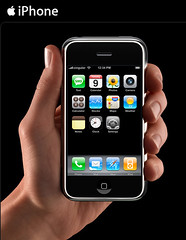
Having been focused on various parts of the ad serving and operations industry for the past ten or more years, and now focused on it pretty much 100% of the time, I find it tremendously exciting to see that one of the largest investments in the post-bubble Internet boom comes to my little corner of the industry – ad serving.
Google’s $3.1 billion all-cash purchase of privately-held DoubleClick announced after trading today (DCLK was bought in 2005 by equity firm Hellman and Friedman for $1.1B) makes their ‘earth-shattering’ purchase price for YouTube pale by comparison for a paltry $1.65B in stock. And this company has actual profit (reportedly $300M last year) built on a core aspect of a large share of the internet publishing sector. Check pretty much any web site business plan these days – and you’ll see online advertising as the lion’s share of projected revenue for the foreseeable future. And while some have scoffed that old-skool ‘display’ advertising is failing to deliver like the contextual advertising that Google built it’s empire on, this purchase is clear validation that display advertising – and more importantly video advertising – are important aspects of the new Internet economy.
In a flash, Google now gains relationships with one of if not the largest aggregation of both publisher and agency business in the digital media space, essentially consolidating the largest player in text-based advertising with their peer in the display ad space. And in a flash, the online advertising business gets a massive validation across the board as the foundation for the next wave (call it Web 2.0 or whatever you’d like) of online activity and as a real business model.
One has to wonder how many publishers who are already at odds with Google (Viacom’s YouTube lawsuit anyone?) may have some level of discomfort with their advertising data residing in Google-owned database like DFP – DoubleClick’s hosted ad serving solution for publishers.
Google now gains a major foothold in the relationship-based world of Madison Avenue in addition to their tremendous reach in the CPA-focused world of search advertising.
It’s not difficult to see how DoubleClick’s announcement last week of their Advertising Exchange may have sweetened this deal significantly, and further demonstrated how the two companies roadmaps were converging. Now having lived through mergers myself, executing on the synergies (shudder, shudder) between these two companies will be an interesting thing to watch. Also interesting will be what happens to other players in the space – like Acquantive, 24/7RealMedia and others.
And will Google follow the model they set when they have acquired other companies? Picasa used to be a pay product. Same with Google Earth (keyhole). As well as Google Analytics (Urchin). Will DoubleClick become a free product one day? Hard to imagine, given the dollars involved today from hundreds of publishers and agencies, but you never know…
It’s interesting to see Google close this deal when only two weeks ago the Wall Street Journal reported that Microsoft was very close to being the buyer; but as an analyst mentioned in the NYTimes story on the purchase, keeping DoubleClick out of Microsoft’s hands was ‘worth billions to Google’ – and that’s what they paid.
Note: My employer is a current customer of DoubleClick and my opinions do not necessarily represent those of TBS Inc. and are my own.
Like this:
Like Loading...





 Not mentioned in the Stevenote was the addition of a new
Not mentioned in the Stevenote was the addition of a new